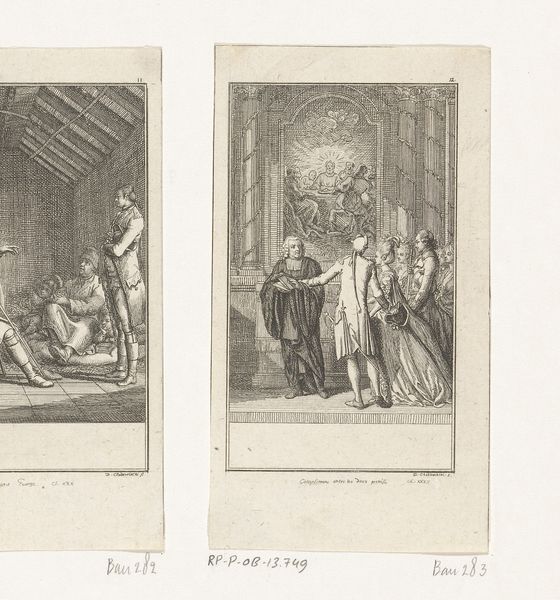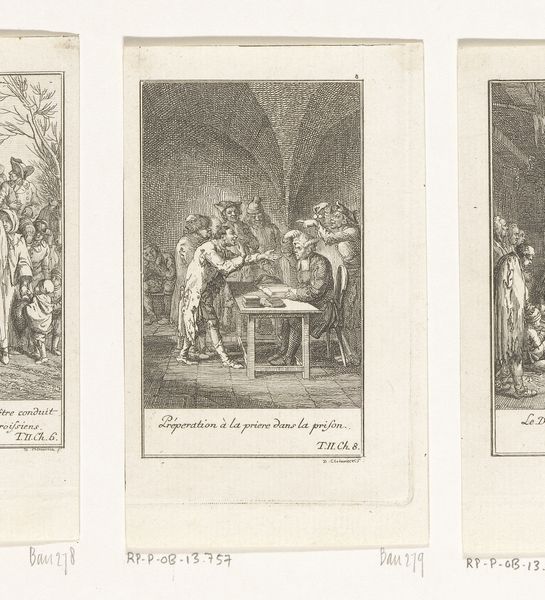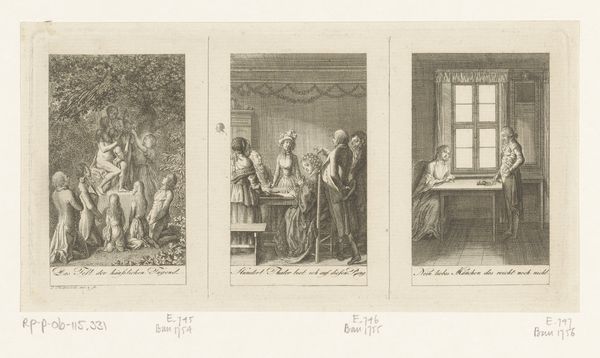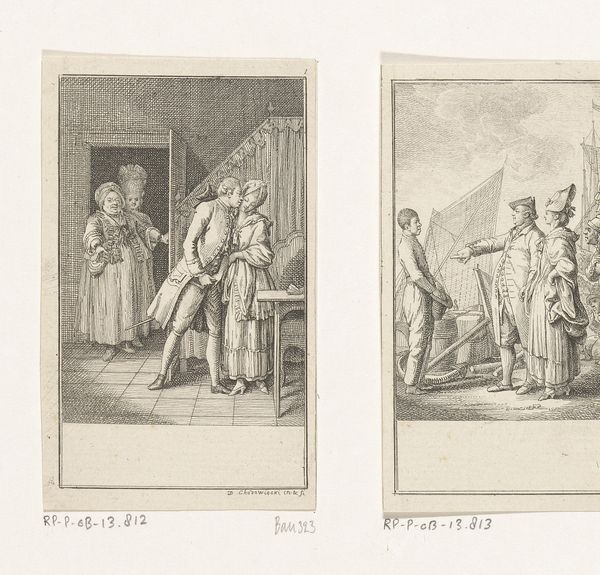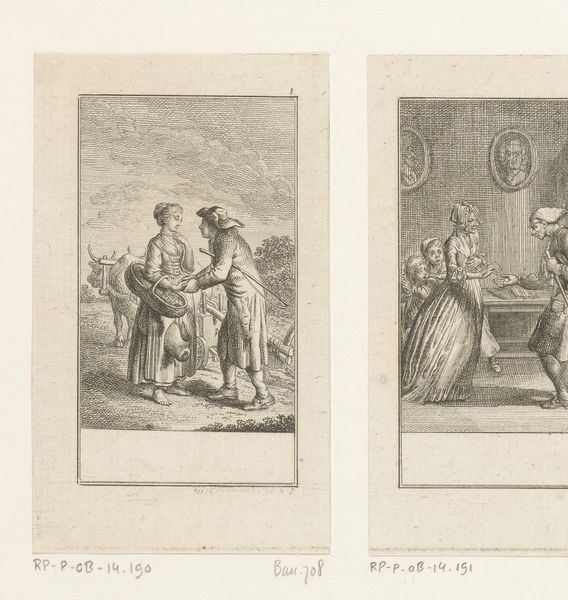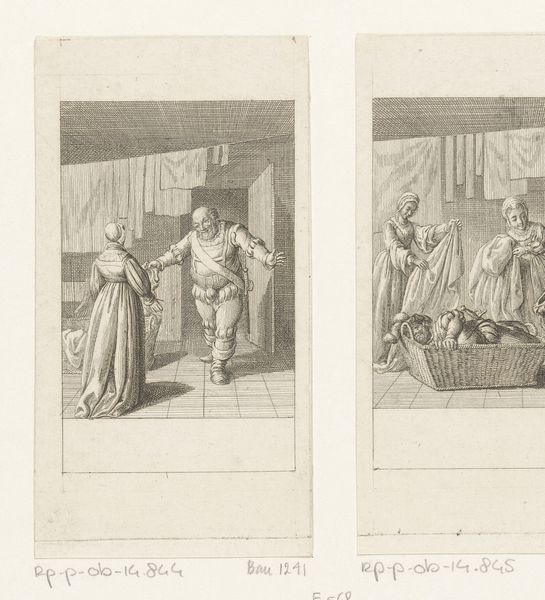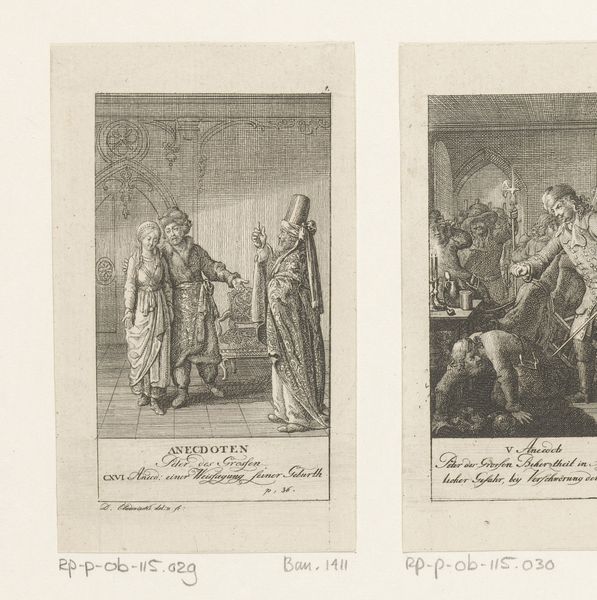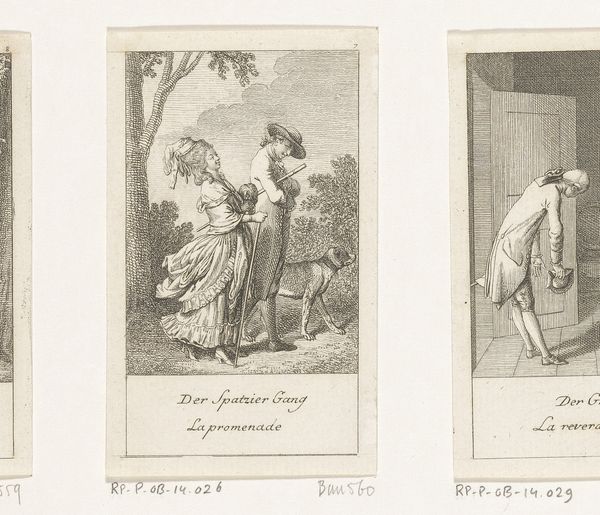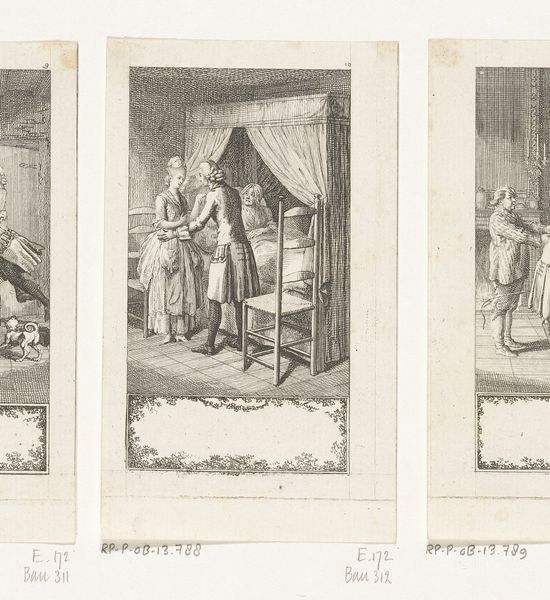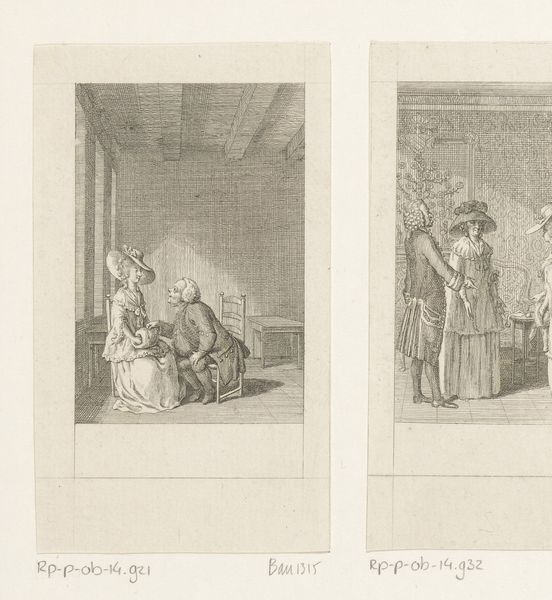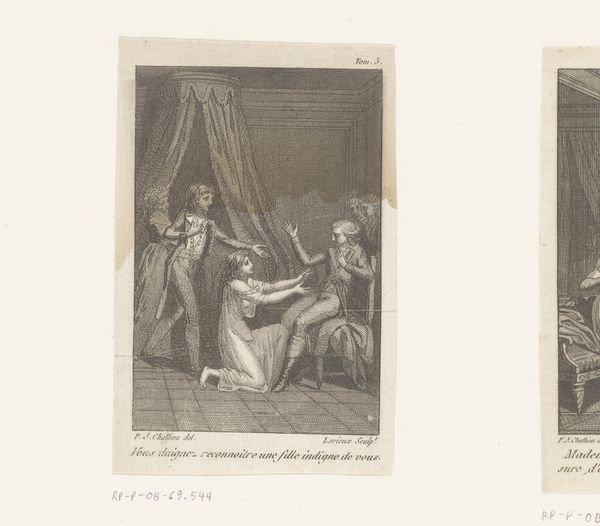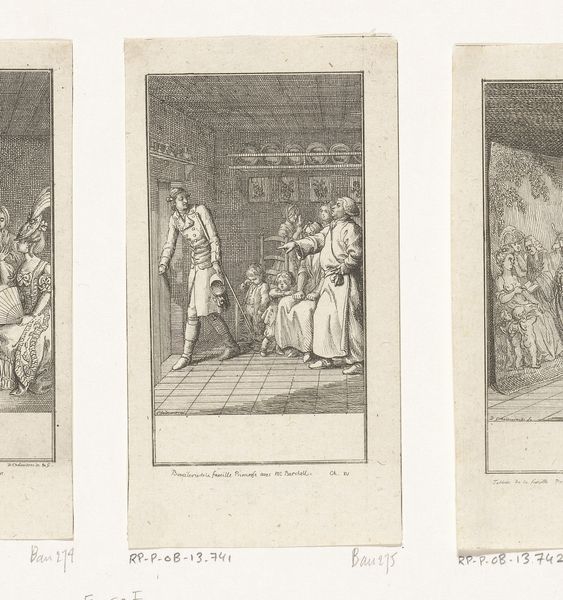
Dimensions: height 112 mm, width 59 mm
Copyright: Rijks Museum: Open Domain
Curator: Look at this intriguing print by Daniel Nikolaus Chodowiecki from 1776. It's titled "Mr. Burchell berispt George." Editor: Oh, my first impression? The scene feels very staged. It looks almost theatrical, like a morality play unfolding on a tiny stage. There’s something about the postures... self-righteous anger meets shamed resignation. Curator: Right, and that theatricality is no accident. Chodowiecki was deeply engaged with the Enlightenment ideals swirling around at the time. This print, done with exquisite detail via engraving, is a scene lifted from Oliver Goldsmith’s "The Vicar of Wakefield." Editor: Ah, so the context enriches the meaning here. We're not just seeing a domestic squabble, but a visual commentary on virtue, class, and the moral obligations within families, all hallmarks of Enlightenment thought. What does Mr. Burchell represent? Curator: He embodies a paternal figure delivering a necessary rebuke to George. What gets me is how the composition directs our gaze. Mr. Burchell’s pointed finger guides the eye. We know George has erred, somehow—the shame practically radiates from him, slouched over the bed among those who share the presumed crime. Editor: That gesture is key. Consider the power dynamics Chodowiecki's highlighting. Here we have a patriarchal figure literally pointing out flaws within, symbolically upholding social hierarchies and acceptable behaviours. Who has the power in this scene? What defines "acceptable"? Curator: It prompts us to really dig into those expectations... social, familial. This work resonates as much today. I think, though, ultimately the image reveals an individual reckoning with morality and accountability. Even with so few lines and in grayscale. Editor: True. Even though this print originates from another era, that idea of interpersonal power play through perceived accountability persists, offering endless ground for examination across intersections of race, gender, and socioeconomics. Curator: Thanks. Thinking about it, it becomes not just a historical snapshot, but an ever-relevant narrative about our moral compass and collective obligations. Editor: Yes. What felt posed becomes potent when we confront what power truly means.
Comments
No comments
Be the first to comment and join the conversation on the ultimate creative platform.
